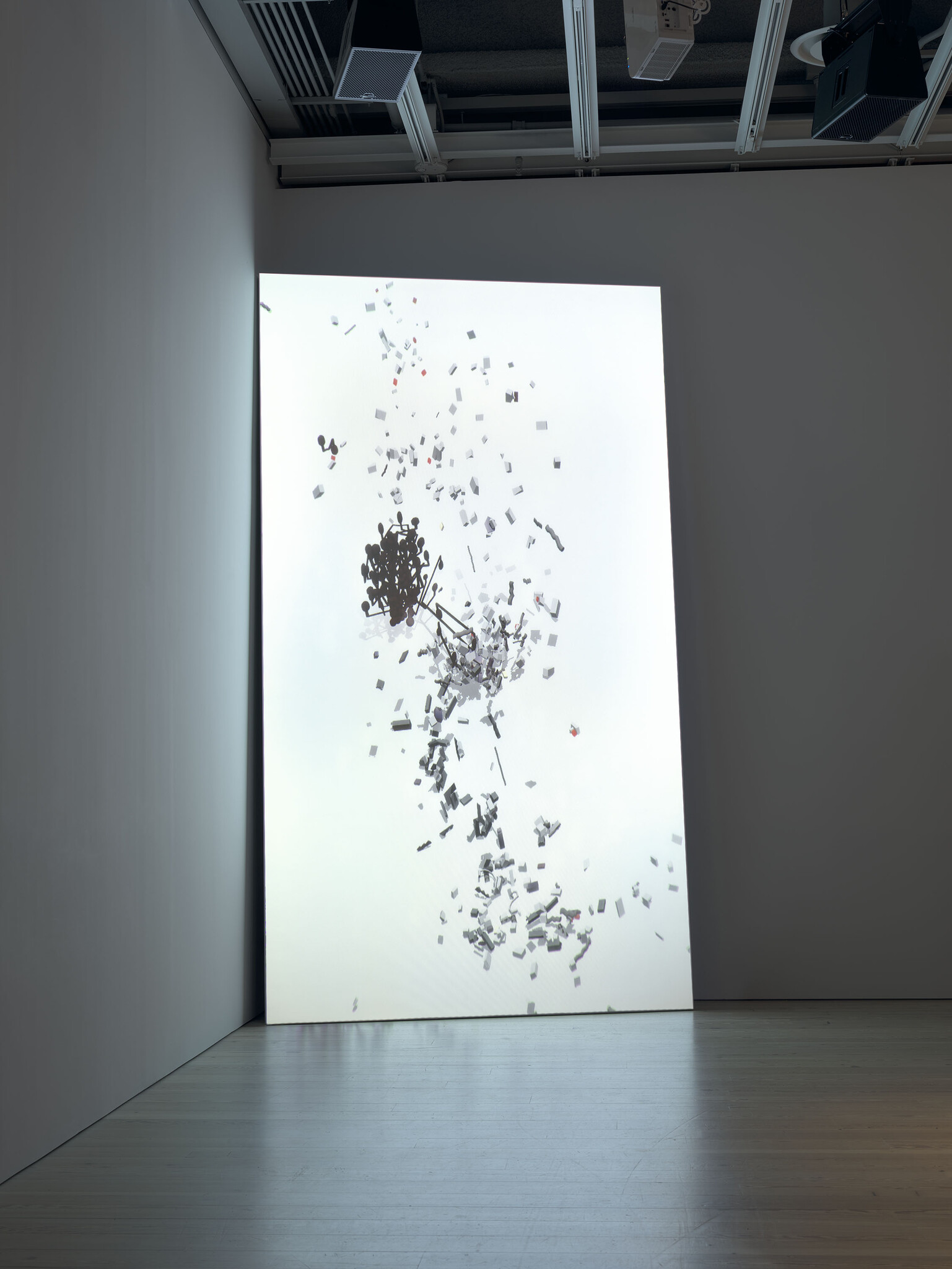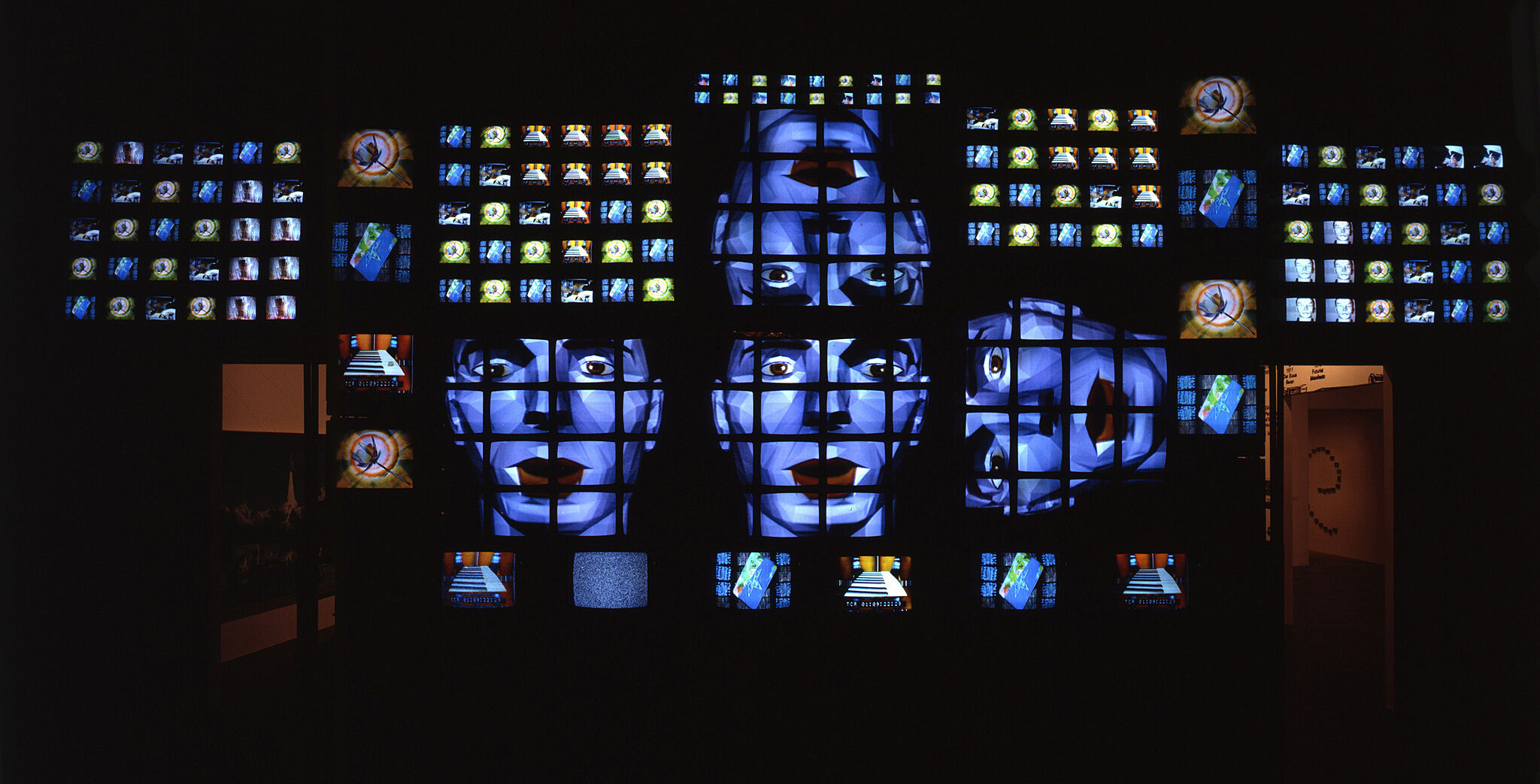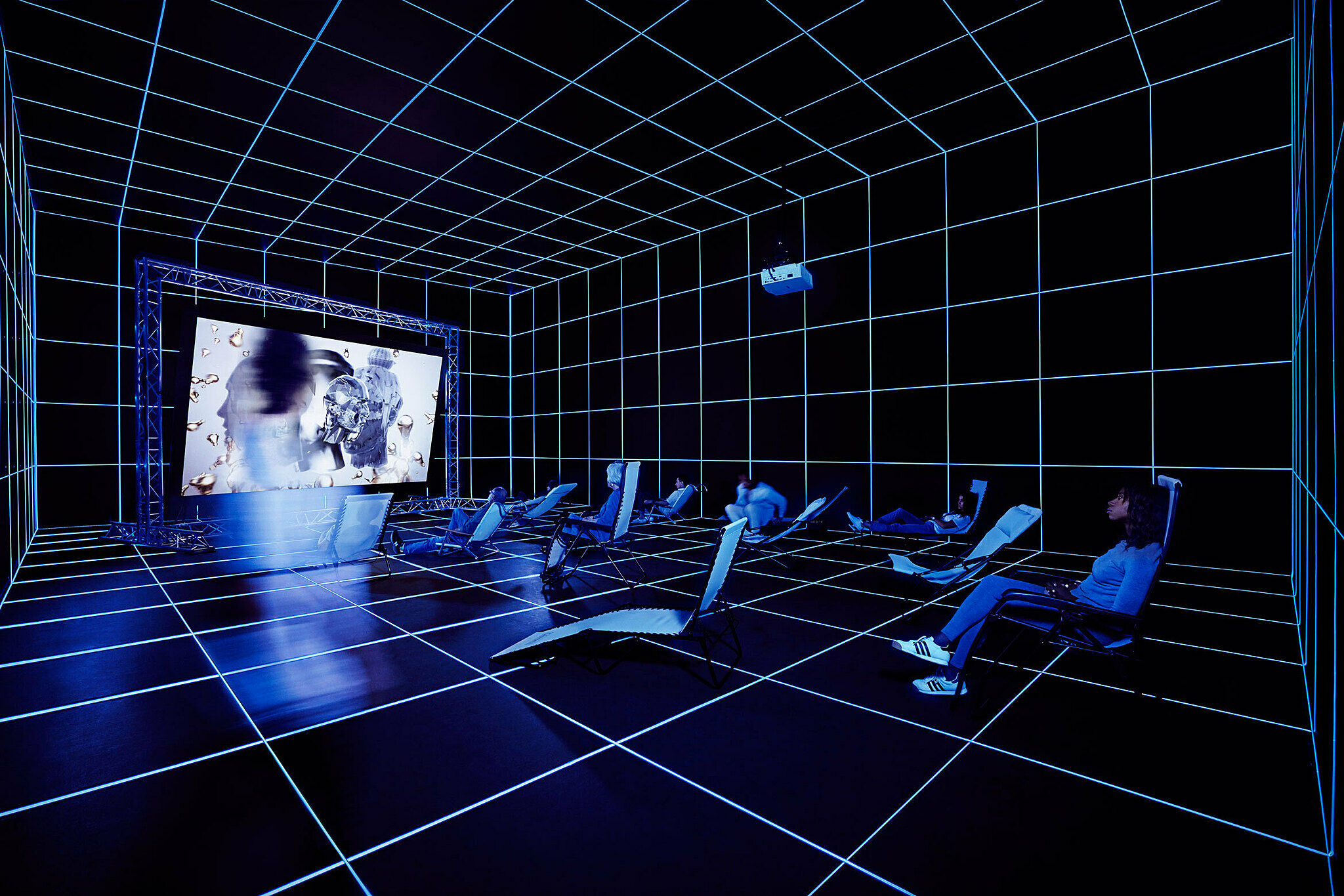Not on view
Date
2013
Classification
Digital Art
Medium
Live simulation, sound, artificial intelligence service; infinite duration
Dimensions
Dimensions variable
Accession number
2015.197
Edition
Unique
Credit line
Whitney Museum of American Art, New York; gift of Candy and Michael Barasch
Rights and reproductions
© Ian Cheng
Audio
-
Ian Cheng, Baby feat. Ikaria, 2013
In Programmed: Rules, Codes, and Choreographies in Art, 1965–2018
0:00
Ian Cheng, Baby feat. Ikaria, 2013
0:00
Ian Cheng: Baby feat. Ikaria, it's a work I made in 2013.
Narrator: Ian Cheng.
Ian Cheng: It's a simulation, and it features three chatbots who are normally used as a kind of customer service function. And instead of talking to a human person, I had them talk to each other. And in the process, I was very hopeful that they would generate their own conversation that would veer off into either absurd realms, or very, very repetitive and semantic nonsense. I think I've achieved that effect. But the premise of it was that the conversation would be generative and while this conversation was occurring, you would see visually on screen different, what looks like floating debris, and over time, as this conversation evolved, that debris would start to take shape and form, and you would start to hopefully see this conversation as its own sort of macro-organism, or entity.
In putting them together, and in putting them in this kind of video game engine where they could simulate out all their possibilities, the hope was for me as an artist to lose control, and to have my control exist at the level of setting up the experiment.
-
Ian Cheng, Baby feat. Ikaria, 2013
In Programmed: Rules, Codes, and Choreographies in Art, 1965–2018 (Spanish)
0:00
Ian Cheng, Baby feat. Ikaria, 2013
0:00
Ian Cheng: Pies de bebé. Ikaria, es una obra que realicé en 2013 y es una simulación.
Narrador: Ian Cheng.
Ian Cheng: Y presenta tres bots conversacionales que suelen utilizarse como una suerte de función para la atención al cliente. Pero, en lugar de hablarle a una persona, hice que hablaran entre ellos. Y, en el proceso, tenía grandes esperanzas de que, de alguna manera, generaran su propia conversación, que se desviara hacia el reino del absurdo o hacia un tipo de sinsentido muy repetitivo y semántico. Creo que he logrado ese efecto. Pero la premisa era que la conversación sería generativa y que, mientras esta conversación estuviera sucediendo, el espectador vería en una pantalla diferente algo semejante a escombros que, con el tiempo y con la evolución de esa conversación, comenzarían a tomar forma y el espectador empezaría, con suerte, a ver esta conversación como una especie de macroorganismo o entidad en sí misma.
Al ponerlos juntos, al unirlos en esta especie de motor de videojuego donde pudieran simular todas sus posibilidades, la idea era que yo, como artista, perdiera el control y que mi control existiera solo al nivel de configurar el experimento.
Exhibitions
Installation photography
-
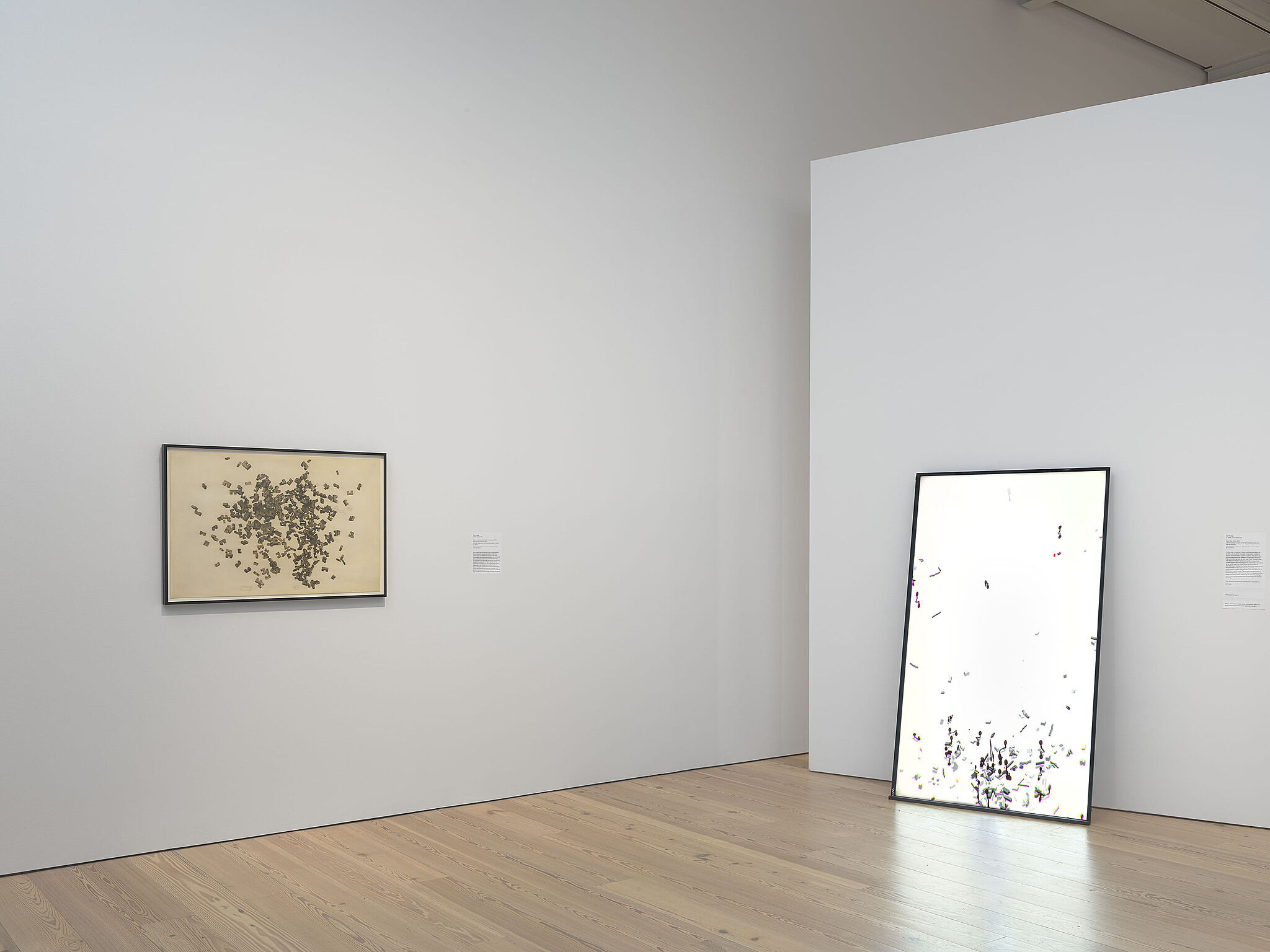

Installation view of Programmed: Rules, Codes, and Choreographies in Art, 1965–2018 (Whitney Museum of American Art, New York, September 28, 2018–April 14, 2019). From left to right: Alex Dodge, Human-Assisted Simulations of a Universal Will to Become (Simulation 9), 2014; Ian Cheng, Baby feat. Ikaria, 2013. Photograph by Ron Amstutz
From the exhibition Programmed: Rules, Codes, and Choreographies in Art, 1965–2018
-
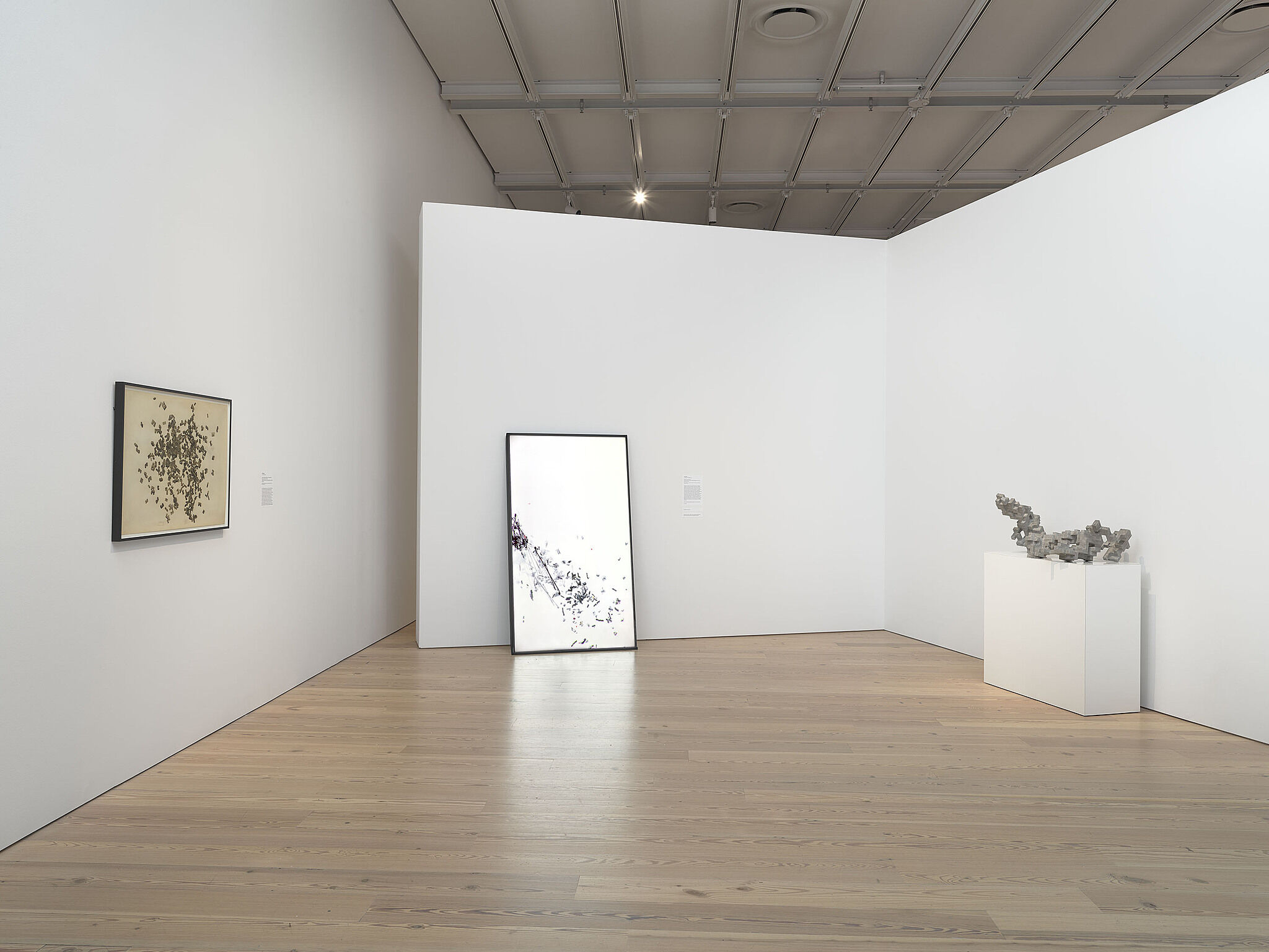

Installation view of Programmed: Rules, Codes, and Choreographies in Art, 1965–2018 (Whitney Museum of American Art, New York, September 28, 2018–April 14, 2019). From left to right: Alex Dodge, Human-Assisted Simulations of a Universal Will to Become (Simulation 9), 2014; Ian Cheng, Baby feat. Ikaria, 2013; Cheyney Thompson, Broken Volume (10 L), 2013. Photograph by Ron Amstutz
From the exhibition Programmed: Rules, Codes, and Choreographies in Art, 1965–2018
-
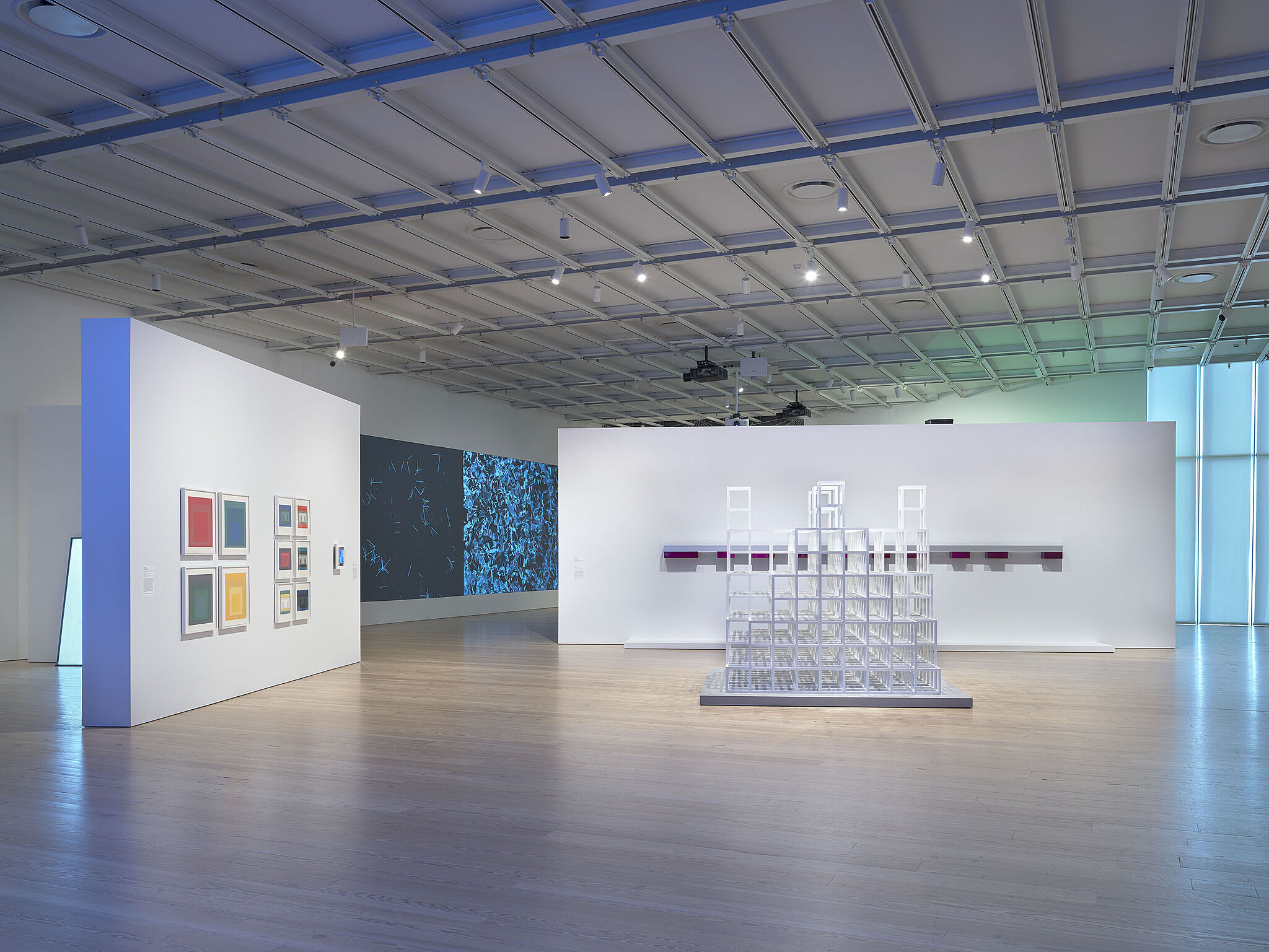

Installation view of Programmed: Rules, Codes, and Choreographies in Art, 1965–2018 (Whitney Museum of American Art, New York, September 28, 2018–April 14, 2019). From left to right, top to bottom: Ian Cheng, Baby feat. Ikaria, 2013; Josef Albers, Homage to the Square V, 1967; Josef Albers, Homage to the Square IX, 1967; Josef Albers, Homage to the Square XII, 1967; Josef Albers, Homage to the Square X, 1967; Josef Albers, Variant V, 1966; Josef Albers, Variant VI, 1966; Josef Albers, Variant X, 1966; Josef Albers, Variant IV, 1966; Josef Albers, Variant II, 1966; Josef Albers, Variant VII, 1966; John F. Simon Jr., Color Panel v1.0, 1999; Casey Reas, {Software} Structure #003 A, 2004 and 2016; Casey Reas, {Software} Structure #003 B, 2004 and 2016; Donald Judd, Untitled, 1965; Sol LeWitt, Five Towers, 1986. Photograph by Ron Amstutz
From the exhibition Programmed: Rules, Codes, and Choreographies in Art, 1965–2018

